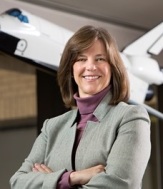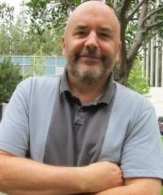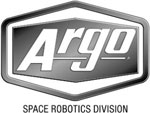
- FUTURE STUDENTS
- Information for Future Students
- Majors and Degrees
- Campus Visit Programs
- Apply for Admission
- Costs and Fees
- Request Information
- Admissions
- Distance & Continuing Education
- Financial Aid & Scholarships
- Student Housing
- Student Parking
- New Student Orientation
- Summer Camps & Pre-College Programs
- Undergraduate Studies
- Graduate Studies
- Student Life & Campus Activities
- CURRENT STUDENTS
- Information for Current Students
- Gmail
- Outlook 365
- Joe'SS
- Blackboard
- OrgSync
- Bookstore
- Calendar
- Career Opportunities and Employer Relations
- Cashier
- Costs & Fees
- Distance & Continuing Education
- Financial Aid
- Graduate Studies
- HelpDesk
- Library
- Registrar
- Residential Life & Dining
- Student Affairs
- Student Health
- Student Life
- Student Organizations
- Student Parking
- Undergraduate Studies
- Writing Center
- ALUMNI
- FACULTY & STAFF
- COMMUNITY
- GIVE TO S&T
- Home
- Registration
- Sponsorship
- Conference Schedule
- Speakers
- Conference Symposia
- Pre-Conference Short Course
- NASA KSC Tour
- 3D-Printed Habitat Challenge
- Paper Submission
- Hotel Venue
- Travel
- Conference Committees
- ASCE Aerospace Division
- Contact Us
Previous Conference
2014 St. Louis, MO
ASCE Earth and Space Conference
Organized by Missouri University
of Science and Technology
Phone: (573) 341-4200
Fax: (573) 341-4992
Email: earthspaceconf@mst.edu
Plenary Speakers
Tuesday, April 12, 2016
Tom Moser
Aerospace Consultant and NASA Senior Executive (retired)
Presentation Title: Commercial Lunar Propellant - Opening a Gateway to the Solar System
|
|
Tom Moser played a major role in human space exploration for over 50 years, as a leader in technology development and as a senior executive in the aerospace industry. He began his career as a mechanical design engineer in 1963 at the NASA Manned Spacecraft Center (now the Johnson Space Center (JSC)). While at JSC he was a member of the design and development teams on every human spaceflight program from Apollo to Space Station, served as the Head of Structural Design, Deputy Manager of the Space Shuttle Orbiter Project, and Director of Engineering. In 1986 he became the Deputy Associate Administrator for Spaceflight at NASA Headquarters in Washington, D.C and then the first Program Director of the Space Station Program, which involved the U.S. and 13 foreign countries. Subsequent to his NASA career, he served as the VP for Space Systems at Fairchild Space and Defense, and Analytical Services Corp. Returning to Texas in 1997, he served as the Executive Director of the Texas Aerospace Commission, under Governor George W. Bush, where he led the creation of three commercial Spaceport Authorities in the state (one is a launch site for Space-X). He later became VP of Constellation Services International and advisor to NexGen Space LLC on the study for NASA’s Emerging Space Office, in July 2015, that determined that it would be technically feasible and economically affordable (within NASA’s existing budget) to establish a permanent industrial base on the Moon. Tom earned a BSME from the University of Texas, a MSME from the University of Pennsylvania and conducted Ph.D. studies at Rice University. He is the recipient of multiple professional society awards and honors, including being a Fellow of the American Institute of Aeronautics and Astronautics and the International Academy of Astronautics, a Distinguished Graduate of the University Of Texas College Of Engineering and the Department of Mechanical Engineering. He was awarded the NASA Exceptional Engineering Medal, the NASA Exceptional Leadership Medal and Presidential Rank Award for Meritorious Service. He is an aerospace consultant, a rancher and a Texas County Commissioner.
|
Jim Keravala
Shackleton Energy Company
Presentation Title: Building an Energy Industry in Space for the Benefit of Humankind: The Off-World Consortium
|
|
Jim Keravala is Chief Operating Officer and cofounder of Shackleton Energy Company, establishing a fleet of space propellant depots and reusable transport systems utilizing lunar polar water for an assured continuous supply of fuel in space. This infrastructure will form the platform of a major new space solar power consortium, the Off-World Consortium, launching to solve the grand global challenges of energy, fresh water and global high bandwidth communications with a single off-world solution. Keravala has an extensive background of successful space developments and operations. He was Director of a space company for seven years arranging launch programs and space access with Russian launch vehicles and subsequently joined Surrey Satellite Technology as Launch Manager for six years overseeing several successful orbital launches on Russian, European and U.S. launch vehicles. In this role he was also involved in the establishment of new space programs for emerging space nations. He was chairman of a high powered rocketry foundation, is a graduate of International Space University, a member of the International Institute of Space Law, a Senior Member of the American Institute of Aeronautics and Astronautics and Chairman Emeritus of the AIAA SF Section. Keravala is a Fellow of the British Interplanetary Society and an elected Academician at the International Academy of Astronautics. He was appointed by the Governor of Hawaii to the Board of PISCES, establishing an analog research facility, reflecting his work at Shackleton Energy Company and is currently on the Board of Directors of the Moon Society and Commercial Advisory Board of the Lunar Exploration Analysis Group based at the Lunar and Planetary Institute. He has a background in aerospace, spacecraft engineering and physics. With additional operational experience in the finance, construction, transportation and mining sectors, Jim has also successfully raised venture capital in Silicon Valley and cofounded and led several space and technology companies.
|
Wednesday, April 13, 2016
Alan Stern
NASA New Horizons
Southwest Research Institute
Presentation Title: The Exploration of the Pluto System
|
|
Dr. S. Alan Stern is a planetary scientist, space program executive, aerospace consultant, and author. He leads NASA’s New Horizons mission to the Pluto system and the Kuiper Belt. He previously served as NASA's Associate Administrator for the Science Mission Directorate. Since 2009, he has been an Associate Vice President and Special Assistant to the President at the Southwest Research Institute. Additionally, from 2008-2012 he served on the board of directors of the Challenger Center for Space Science Education, and as the Chief Scientist and Mission Architect for Moon Express from 2010-2013. From 2011-2013 he served as the Director of the Florida Space Institute. Dr. Stern currently also serves as the chief scientist of World View, a near-space ballooning company, and of the Florida Space Institute. He was also former chair of the Commercial Spaceflight Federation's Suborbital Applications Researchers Group (SARG). In 2007, he was named to the Time 100. Stern has published more than 300 technical papers and 40 popular articles. He has a long association with NASA and has been involved as a researcher in 24 suborbital, orbital and planetary space missions, and he has led the development of eight scientific instruments for NASA space missions. He was the principal investigator of the Southwest Ultraviolet Imaging System, which flew on two space shuttle missions, STS-85 in 1997 and STS-93 in 1999. In 2010, Stern became a suborbital payload specialist trainee and is currently training to fly a series of suborbital space research missions with Virgin Galactic and XCOR Aerospace in 2013-2014. Time Magazine named him one of the 100 most influential people in the world in 2007. Stern holds a doctorate in astrophysics and planetary science from the University of Colorado at Boulder, twin master's degrees in aerospace engineering and planetary atmospheres and twin bachelor's degrees in both physics and astronomy from the University of Texas, Austin. He is an instrument-rated commercial pilot and flight instructor, with both powered and sailplane ratings. VIDEOS: ("New Horizons" 2:52) (The Year of Pluto trailer 2:40) (NH Mission trailer 1:01) https://www.youtube.com/watch?v=MmZrpCataPc |
Thursday, April 14, 2016
Luther Beegle
Jet Propulsion Lab
Presentation Title: Drilling on the Martian Surface with the Mars Science Laboratory
|
|
Principal Investigator for SHERLOC on Mars 2020 as well as the deputy section manager for the Planetary Science Section within the Science Division at the Jet Propulsion Laboratory. He received his BS in Physics from the University of Delaware in 1990, and his PhD in Physics from the University of Alabama At Birmingham in 1997. Dr. Beegle is an experimental astrophysicist by training and has extensive experience developing and designing instrumentation such as organic molecule extract techniques, charged particle optics, ion mobility spectrometers, and cylindrical ion trap mass spectrometers for space and terrestrial applications. The topic for his Ph.D. thesis was the nature of organic molecules in interstellar space, including alteration products in analogue environments. In addition, a current area of research is how robotic sample acquisition techniques physically and chemically alter the components of samples on current and future in situ missions. He is currently a Surface Sampling Scientist on the Mars Science Laboratory where he works with the science team to identify suitable high valued scientific samples that will not damage the Sample Acquisition, Sample Processing and Handling (SA/SPAaH) on the MSL rover.
|
ASCE Columbia Medal Award Recipient
Paul D. Spudis
NASA Lunar and Planetary Institute
Presentation Title: The Value of the Moon: An Enabling Asset for Spaceflight
|
|
Dr. Spudis is a geologist and senior staff scientist with NASA's Lunar and Planetary Institute, in Houston, TX. He specializes in research on the histories of and the processes on the terrestrial planets. He has extensive background in geology and planetary science, including interpretation of remote-sensing and image data and integrated studies with information from planetary samples. He has developed new techniques to analyze remote geochemical
|
Friday, April 15, 2016
Bonnie J. Dunbar
Texas A&M Engineering Experiement Station
Presentation Title: An Engineer-Astronaut Perspective on Planetary Exploration: Past, Present and Future
 |
Dr. Bonnie J. Dunbar, retired NASA astronaut, engineer and educator, has recently joined Texas A&M Engineering as a Texas A&M Engineering Experiment Station (TEES) Distinguished Research Professor in the Department of Aerospace Engineering. She also has a joint appointment as the director of the TEES Institute of Engineering Education and Innovation (IEEI). Dunbar, who is a member of the prestigious National Academy of Engineering, previously worked at the University of Houston where she provided leadership in the development of a new integrated university science, technology, engineering and mathematics (STEM) center. She was an M.D. Anderson Professor of Mechanical Engineering and she developed a new innovative course for the introduction of engineering to freshmen students. She also directed the SICSA Space Architecture graduate program. She has devoted her life to furthering engineering, engineering education, and the pursuit of human space exploration. Dunbar worked for The Rockwell International Space Division Company building Space Shuttle Columbia and worked for 27 years at NASA, first as a flight controller; then as a mission specialist astronaut, where she flew five space shuttle flights, logging more than 50 days in space; and then as member of the Senior Executive Service (SES). Her executive service included assistant NASA JSC director for university research; deputy director for Flight Crew Operations; and as NASA headquarters deputy associate administrator for the Office of Life and Microgravity Sciences and Applications (OLMSA). After retiring from NASA, Dunbar became president and CEO of The Museum of Flight in Seattle, where she established a new Space Gallery and expanded its K12 STEM educational offerings. She has also consulted in aerospace and STEM education as the president of Dunbar International LLC, and is an internationally known public speaker. Dunbar holds bachelor’s and master’s degrees in ceramic engineering from the University of Washington and a Ph.D. in mechanical/biomedical engineering from the University of Houston. She is a Fellow of the American Ceramic Society, the American Institute of Aeronautics and Astronautics, and the Royal Aeronautical Society. She has been awarded the NASA Space Flight Medal five times, the NASA Exceptional Leadership Medal and the NASA Distinguished Service Medal. Dunbar was inducted into the Royal Society of Edinburgh, and in 2002 was elected to the US National Academy of Engineering. In 2013, she was selected into the Astronaut Hall of Fame. |
 Missouri University of Science and Technology | Founded 1870
Missouri University of Science and Technology | Founded 1870
Distance and Continuing Education | 216 Centennial Hall | Rolla MO 65409
Contact Us | 573-341-6222 | ©2015

 Missouri University of Science and Technology | 1870 Miner Circle, Rolla, MO 65409 | 573-341-4111 | 1-800-522-0938
Missouri University of Science and Technology | 1870 Miner Circle, Rolla, MO 65409 | 573-341-4111 | 1-800-522-0938
©2008 Curators of the University of Missouri | UM System | Diversity and Inclusion | Accreditation
| Title IX |
Mission · DMCA · Disability Resources · Contact S&T · Missouri S&T is an equal opportunity/affirmative action institution

-167x210.jpg)

-163x214.jpg)



